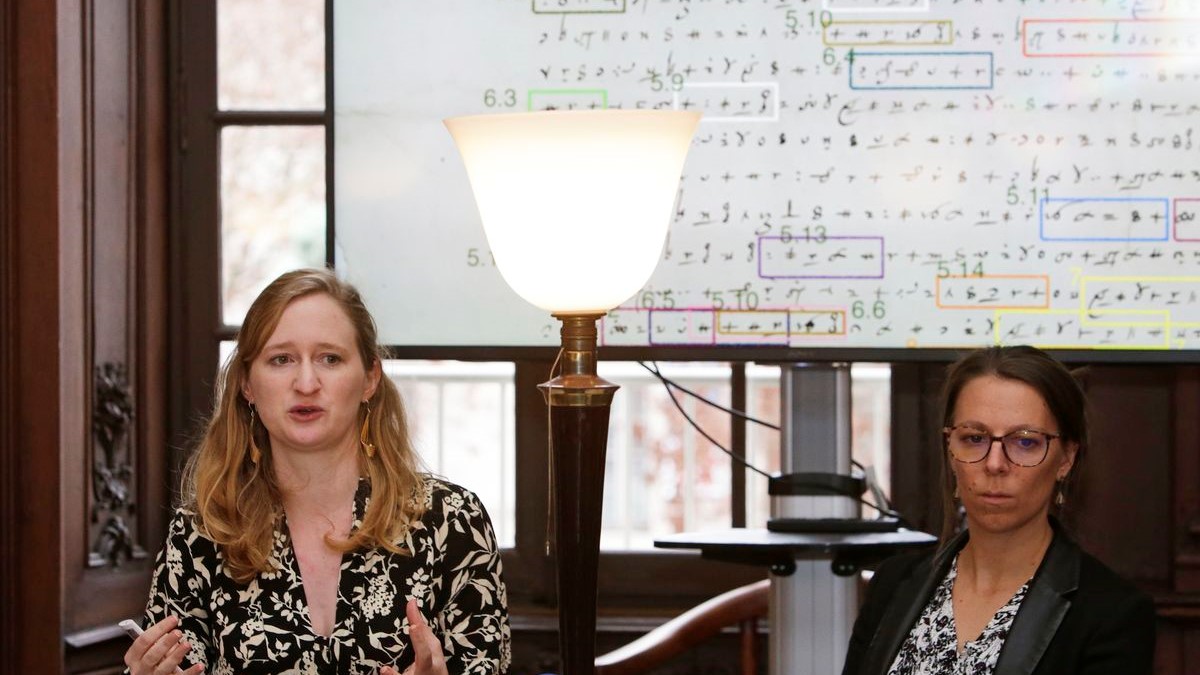Emperor king's top secret assassination letter finally decrypted after 500 years
Researchers in France have finally cracked a complex code of mysterious symbols and "nonsense" decoys written by Charles V, the former Holy Roman Emperor and King of Spain.
Researchers have finally cracked a complex code used in a top secret letter from 1547 that the Holy Roman Emperor and King of Spain, Charles V, wrote when he was fearing for his life. In the encrypted letter, which was sent to one of his ambassadors in France, Charles V writes about tensions with the French king Francis I, who he thought might be plotting to assassinate him.
Charles V, the King of Spain between 1516 and 1556, also ruled the Holy Roman Empire from 1519 to 1556. During his rule, Charles V presided over one of the largest empires in European history, which covered modern day Spain, Germany, Austria, Belgium, Netherlands and parts of Italy, and he also oversaw the Spanish colonization of the Americas.
In 1547, Charles V wrote a letter to his French ambassador Jean de Saint-Mauris. The document, which is dated Feb. 22, contains several paragraphs in normal handwriting interspersed by large sections of unrecognizable symbols — a secret code intended to hide sensitive information. The letter is now part of the archives at the Stanislas Library in Nancy, a city in eastern France, where it has remained untouched for centuries.
The letter, rediscovered by library staff in 2019, later came to the attention of a team of cryptographers and computer scientists who took it upon themselves to uncover the coded section of the document. Now, after more than six months of "painstaking" research, the code has been cracked, the team announced Nov. 23 at a press conference at the Stanislas Library.
"It's rare as a historian to manage to read a letter that no one had managed to read for five centuries," project researcher Camille Desenclos, a historian at the University of Picardy Jules Verne in France, said at the press conference.
Related: Secret words exchanged between Marie Antoinette and rumored lover uncovered in redacted letters
The code used by Charles V was hard to decipher for two main reasons, according to a statement translated from French.
Get the world’s most fascinating discoveries delivered straight to your inbox.
First, each symbol represented a whole word, rather than being a simple letter-for-letter encryption, which would have been much easier to work out. Second, some of the symbols were decoys that meant absolutely nothing, which were likely added to throw off anyone who had knowledge of the code and tried to read the letter.
The researchers began the investigation with a simple computer program designed to help them differentiate the symbols and understand the structure of the writing. However, this proved fruitless and the team was forced to create a more advanced algorithm that could use patterns in the symbols to determine probable meanings and highlight probable decoy symbols. The new algorithm helped uncover some of the hidden passage but could not decipher the entire section, the researchers wrote in the statement. But luckily, the team was able to find part of a decryption code in a separate letter written by Jean de Saint-Mauris to another ambassador serving Charles V, which helped to fill in the gaps.


The fully-transcribed letter highlights a "fragile peace" between Charles V and France, the researchers wrote. The contemporary tensions between France and Spain originated back to the Italian War of 1494 to 1495, before either Charles V or Francis I had come to power. During the war, Spain had occupied a northeastern region of Italy known as Piedmont, which bordered France to the east. This unsettled the French because Spain could easily attack from Piedmont if it decided to invade France.
Charles V's letter was written shortly after the death of England's King Henry VIII, who was an important ally of Francis I. Fearing that Henry VIII's death might destabilize France and cause its leaders to act irrationally, Charles V encouraged Saint-Mauris to do everything possible to maintain the peace between the two nations.
However, Charles V also wrote that he had heard of a rumor that someone high up in French politics had been petitioning Francis I to assassinate him, and so asked Saint-Mauris to investigate further. This is the first and only mention of this assassination plot historians have ever unearthed, and although the rumor Charles V heard was likely false, it is still an important new piece of cryptography, the researchers wrote.
Related: Charles Darwin's stolen 'tree of life' notebooks returned after 20 years
The letter also mentions a group of Charles V's advisories known as the "Schmalkaldic league," which was led by a group of German Lutheran princes who opposed the religious rulings imposed on them by the Catholic Holy Roman Empire. At the time the letter was written, Charles V had already started a military operation to bring the league to heel, the researchers wrote.
But despite Charles V's suspicions about his various enemies, 1547 ended up being a good year for the Spanish ruler. By the end of the year, Francis I had died and the Schmalkaldic league had been disbanded, which left him in a much stronger position, the researcher wrote.
With the decoded 1547 letter in hand, the researchers now hope to crack more codes within other encrypted letters written by Charles V. These types of correspondences give a rare "snapshot of Charles V's strategy in Europe," Desenclos said. "It is likely that we will make many more discoveries in the coming years."

Harry is a U.K.-based senior staff writer at Live Science. He studied marine biology at the University of Exeter before training to become a journalist. He covers a wide range of topics including space exploration, planetary science, space weather, climate change, animal behavior and paleontology. His recent work on the solar maximum won "best space submission" at the 2024 Aerospace Media Awards and was shortlisted in the "top scoop" category at the NCTJ Awards for Excellence in 2023. He also writes Live Science's weekly Earth from space series.



